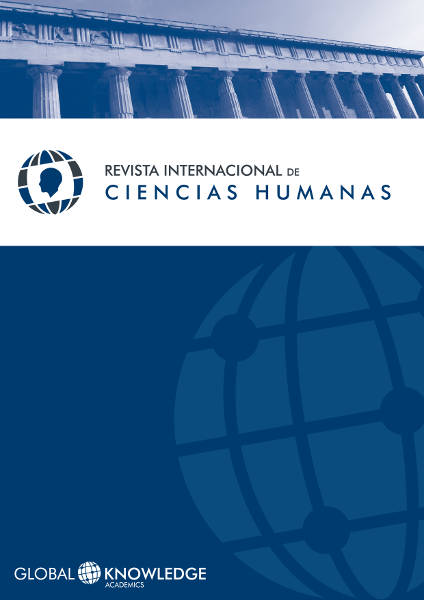Semantic Representations of Race and Class in Popular Culture to Literature and TV
DOI:
https://doi.org/10.37467/gka-revhuman.v2.711Keywords:
Semantic Representations of Race and Class, Literature, Popular Culture, TelevisionAbstract
There has been a dialogue between anthropological and literary studies because literature falls within the scope of cultural anthropology. The literature of a people substantially reflects aspects of its culture and its worldview. This research project investigates the representations of race, class and race relations in “O Romance d’A Pedra e o Príncipe do Sangue do Vai-e-Volta”, a novel by the contemporary Brazilian author, Ariano Suassuna (1927). First, demonstrating how Suassun’s representation of popular culture reflects race, class and social race relations in a particular area of Brazil, the traditional, rural Northeast. Subsequently, investigating how mass communication, particularly the cultural vehicles of television and cinema, uses literature to attempt to change or to spread and perpetuate racist attitudes and forms of thinking. Even though studies in modern anthropology have shown the concept of “race” to be a cultural construction and a fallacy, literature and mass television culture exploit deliberate identites of ‘race’ based on received stereotypes. The linguistic and cultural debates of a culturally and racially hybrid country, such as Brazil, cannot help but consider the concepts of “race” and “ethnic groups”, since Brazil is a country that inherited the typologies of color, class and prejudice from patriarchal and agrarianbased Portuguese colonialism (Ribeiro, 1995). Those debates are reflected in popular culture in particular ways; are captured in learned forms of culture, such as literature; and are then appropriated by media and television, or so-called mass forms of culture. The works of Suassuna can be seen as a valuable resource of this debate, pointing to issues of assimilation or segregation of race and/or class, power and influence, good or bad, tolerance and prejudice. There was observation of the impact of his work not only through literature but also medias.
References
Andrade, Carlos Drummond de (2006). In: Suassuna, A. Romance d’A Pedra do Reino e o Príncipe do Sangue do Vai-e-Volta . 8ª edição. Rio de Janeiro: José Olympio.
Boas, Franz (1940). Race, Language and Culture . Chicago: The University of Chicago Press.
Freyre, G. (1998). Casa-Grande & Senzala . 34ª Edição. Rio de Janeiro: Editora Record.
Lewontin, R. C. (1972). “The apportionment of human diversity”. Evolutionary Biology , 6, 391-398.
Ribeiro, Darcy (1995). O povo brasileiro: evolução e o sentido do Brasil . São Paulo: Companhia das Letras.
Santos, R. V. e M. C. Maio (2005). “Antropologia, raça e os dilemas das identidades na era da genômica. História, Ciências”. Saúde-Manguinhos, 12(2). Rio de Janeiro. May/August.
Stanford, C., J. S. Allen, S. C. Antón (2009). Biological Anthropology: The Natural History of Humankind . 2nd Ed . Prentice Hall/Pearson.
Suassuna, A. (2005). Auto da Compadecida. São Paulo: Agir.
Suassuna, A. (2006). Romance d’A Pedra do Reino e o Príncipe do Sangue do Vai-e-Volta . 8ª edição. Rio de Janeiro: José Olympio.
Vilar De Andrade, V. L. e H. F. Martins (Orientadora) (2008). Sobre a identidade da metáfora literária: Uma análise do romance d’a pedra do reino e o príncipe do sangue do vai-evolta. Rio de Janeiro. 85p. Dissertação de Mestrado – Departamento de Letras, Pontifícia Universidade Católica do Rio de Janeiro.
Downloads
Published
How to Cite
Issue
Section
License
Those authors who publish in this journal accept the following terms:
- Authors will keep the moral right of the work and they will transfer the commercial rights.
- After 1 year from publication, the work shall thereafter be open access online on our website, but will retain copyright.
- In the event that the authors wish to assign an Creative Commons (CC) license, they may request it by writing to publishing@eagora.org









